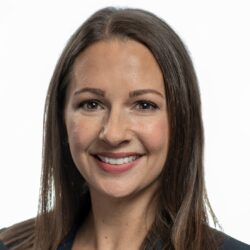My oldest son does well in school. He would do well if you stuck him in an empty room with some books, but I wanted more for him. As his mother, I understand the conditions under which he thrives. I know that I have a precious few years to instill a love of learning and a strong foundation in him. Luckily for me, if our local district school wasn’t going to rise to my expectations, I would be able to find and fund other opportunities to build the academic experience I wanted for him.
That’s school choice. I’m lucky to have it.
But let’s be honest. At the moment, these choices are only available to parents who, like me, have the financial means to use schools as a determining factor when looking to buy a new home, or enroll in local parochial or private schools, or opt for private tutoring and enrichment.
For some, the phrase “school choice” heralds the breakdown of our traditional notion of neighborhood public schools. But the truth is we already have a nationwide program of school choice—just one that only privileged families truly have access to.
Every parent has the same small window I did to make sure their child builds a foundation. But for families with fewer resources, what happens when the local school doesn’t meet their child’s needs? Or worse, when that school is outright failing its students, year after year? When we fight school choice, we’re really fighting the rights of poor families to make the same choices that wealthier families already do.
The good news is that cities and school districts from Denver to Indianapolis to Boston are beginning to think about how to infuse more choices into the fabric of their existing school systems. And new systems, like the Recovery School District in Louisiana and the Achievement School District in Tennessee, are introducing even more options for kids.
But it’s not enough. Across the country, parents are lining up to enroll their kids in the best district and charter schools. There is far more demand than supply. In its analysis of first-year choice outcomes, Denver Public Schools School Choice Transparency Committee found that there are far too few seats in high-performing schools to meet parents’ demands. The New York City Charter School Center estimated that parents submitted 212,500 applications for 21,000 available spots last year.
It’s time for parents and the education community to demand enough great options—through more magnet and pilot schools, charter schools and traditional district schools that receive greater flexibility to try new approaches to instruction—so any family who is looking for a different school for their kid can find and afford one.
That won’t be easy. Many of us are concerned with the consequences of school choice for the education system we know well. We worry about school funding: Will adding school options make our districts even more financially strapped than they already are? What about the staff who teach in schools where enrollment might drop? Will opening other local school options affect their jobs? These are all valid questions that deserve our time and attention.
And there are other real barriers to making school choice work: When a network of school options expands, the choices can be overwhelming and the system itself hard to navigate. If enrollment procedures aren’t made clear and parents don’t have easy access to information about their options, even an expanded system of school choice can leave out under-resourced families.
It’s time to identify creative ways to deal with these big questions, so that we can stay focused on the one that matters most: how to ensure every family, not just a lucky few, has quality school options.
Why not ensure straightforward information is available to parents so they can understand how their local schools perform against metrics that actually matter? This means providing parents with information about the feel and culture of a school, like arts and sports offerings, gifted and talented programming. Hard measures of school performance, like graduation and suspension rates, test scores and the performance of special education students and English language learners, will also help.
In an ideal world, parents would have access to student and parent survey results, to get an insider’s view of how families experience a school before enrolling their child. In addition to having support to identify schools that really work for their family, parents need clear information about how to enroll their children in those schools. Some cities, like Newark, are testing central enrollment systems for district and charter schools, so parents don’t have to navigate each system separately.
My son is thriving, but I have two other kids behind him. I’m not sure how they will do in school yet, or if the local kindergarten program will feel right for them. We’ll see. One thing I am sure of, though, is that if at any point during their K-12 experience, I need something different for one, or two, or all of my kids—I’m going to go and find it.
Every parent should have that privilege.








